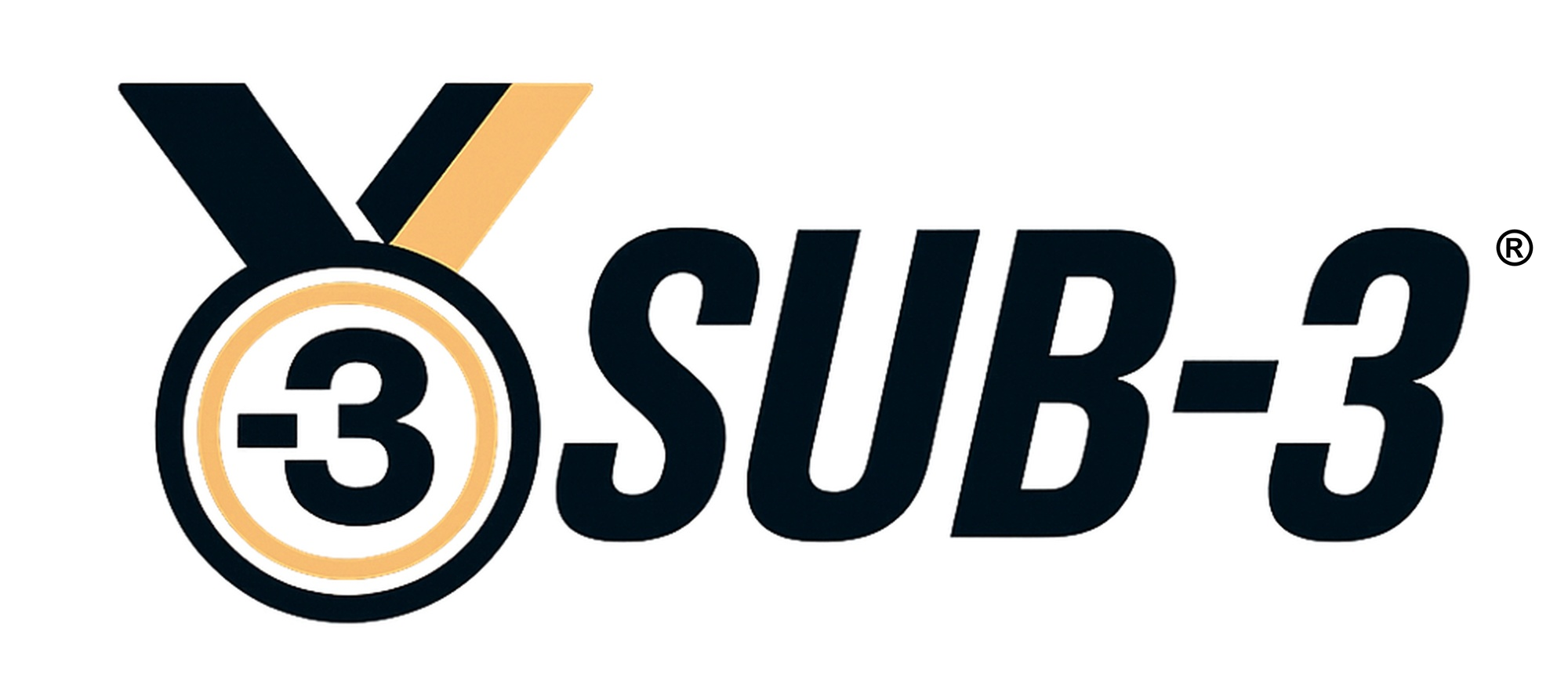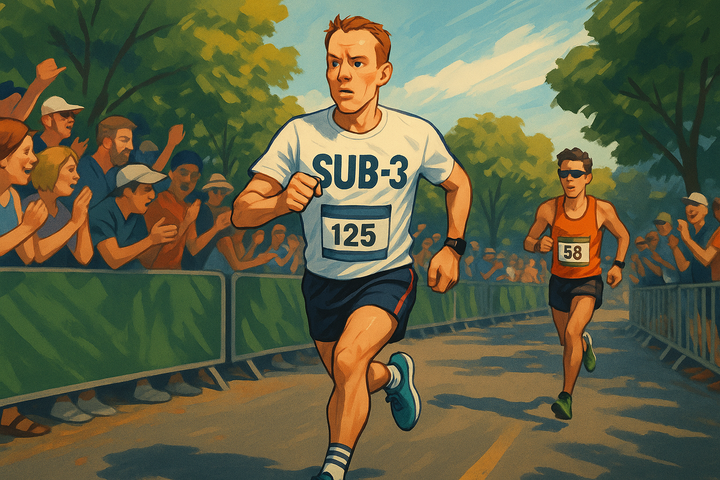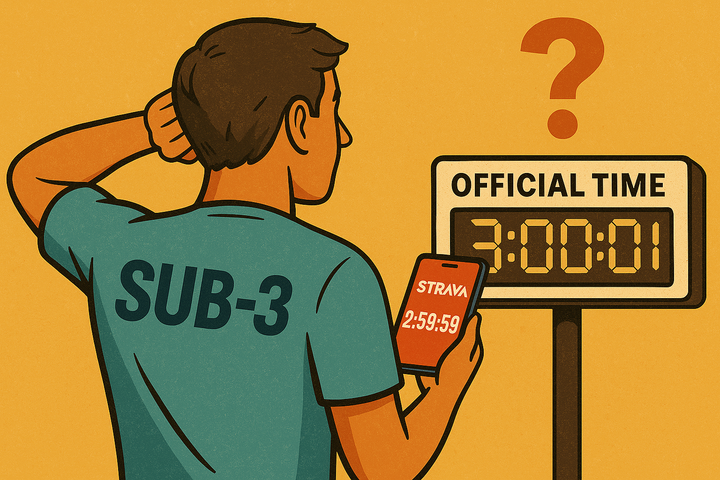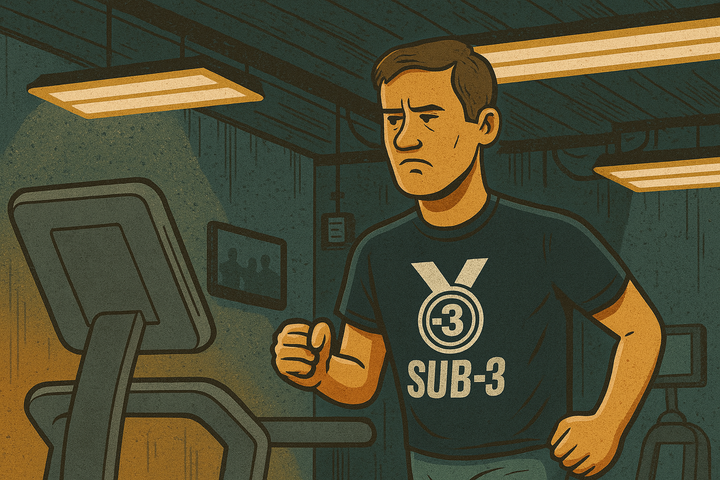Am I too old to run a sub-3 marathon?
You don’t need to be young to run sub-3 – just disciplined, consistent and willing to train smart. Age changes the game, but it doesn’t end it.
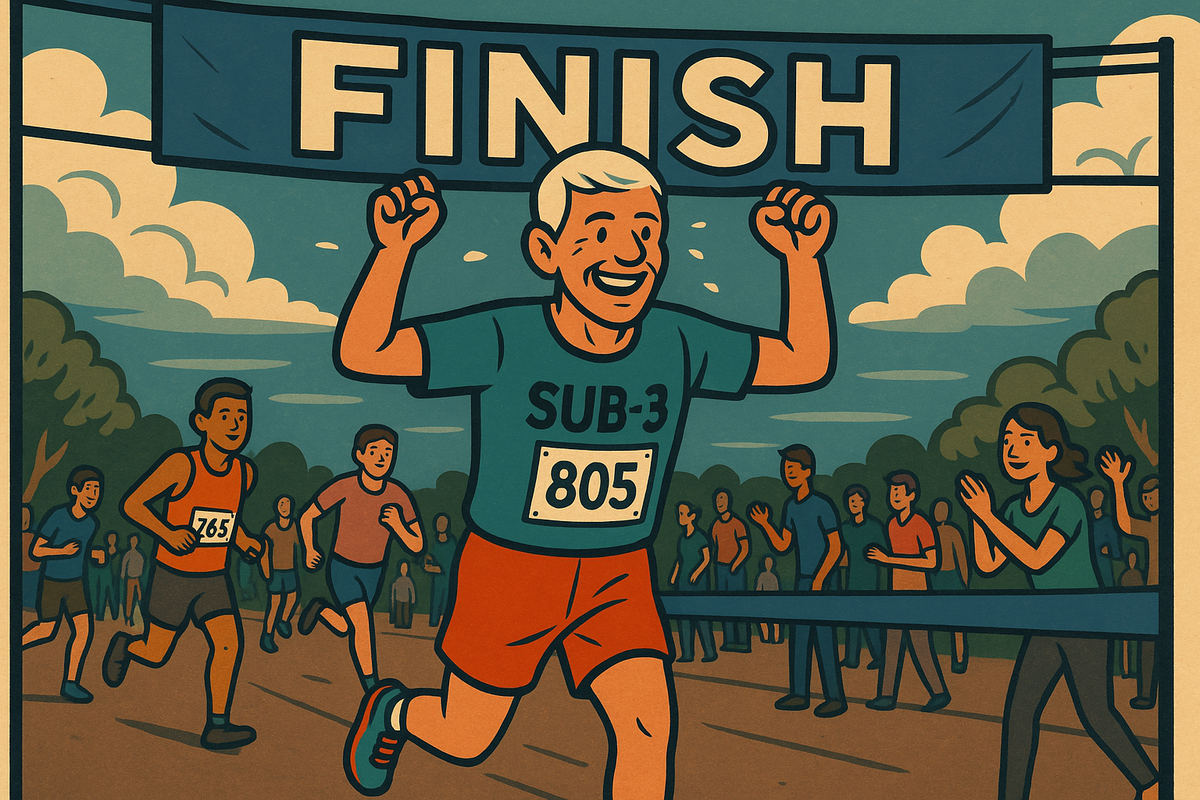
Let’s start with a nod to the legendary Ed Whitlock - the first man over 70 to run a marathon in under three hours. The English-born Canadian clocked an astonishing 2:59:10 at the age of 72, back in 2003, wearing basic, no-frills racing flats and training solo on loops around a cemetery. His mark stood until 2018, when Gene Dykes bettered it with a 2:54:23 at age 70. More recently, in 2022, 71-year-old Jo Schoonbroodt set the current M70 world record with a phenomenal 2:54:19.
These are extraordinary performances - exceptions, not the norm. But they prove one thing beyond doubt: age alone doesn’t disqualify you from chasing sub-3. If you’ve got the fire, and your body can handle the training, it’s still very much possible.
In truth, most sub-3 runners aren’t in their 70s. They’re ordinary people in their 30s, 40s and 50s who train with purpose. If that’s you - and you’re wondering if you’ve missed your chance - the answer is almost certainly no. With structure, consistency and injury management, you’re still right in the heart of the sub-3 window. If you've kept up training, your endurance base could likely be stronger than it was a decade ago and your capacity for discipline, pacing and recovery is often better too.
I didn’t run under 3 hours until I was 42 - despite years of failing to break 3:30 in my 20s and 30s. At 45, I’m now chasing 2:40. Age hasn’t held me back - it’s given me the discipline to train and diet consistently, the freedom to prioritise running and the cumulative benefits that only come from years of building a base.
If you’re unsure whether you’re in range, a useful benchmark is your current 5K time. If you can run under 19:30 today - or within striking distance of it - you likely have the raw speed needed. Sub-3 pace equates to 4:15/km (6:52/mile), which isn’t far off the pace required for 19:30. If you’re regularly hitting parkruns in the low-20s, you’re not far off. With consistent training and marathon-specific preparation, many runners in their 30s and 40s can bridge that gap within a year.
For women especially, sub-3 becomes rare from around age 50 onward. But, again, it’s not impossible. And for men and women alike, the majority of sub-3 performances still happen between 30 and 50, making it a very realistic target for dedicated amateur runners.
How Tough Is Sub-3 Compared to Good For Age?
The 2026 London Marathon Good For Age qualifying standards help contextualise how rare sub-3 really is across the age spectrum:
| Age | Men (Good For Age) | Women (Good For Age) |
|---|---|---|
| 18–39 | sub-2:52 | sub-3:38 |
| 40–44 | sub-2:57 | sub-3:43 |
| 45–49 | sub-3:02 | sub-3:46 |
| 50–54 | sub-3:07 | sub-3:53 |
| 55–59 | sub-3:12 | sub-3:58 |
| 60–64 | sub-3:34 | sub-4:23 |
| 65–69 | sub-3:52 | sub-4:53 |
| 70–74 | sub-4:52 | sub-5:53 |
For women, a sub-3 marathon is well ahead of any Good For Age requirement at any age. It would all but guarantee a London place - and likely a Championship entry. For men, sub-3 becomes exceptional from age 50 onwards and well beyond GFA expectations from age 55.
Five ways to assess whether your age will hold you back
1. Are you still improving or plateauing?
If your times are still trending down in your late 40s, 50s or even early 60s, there’s reason to believe you haven’t hit your ceiling yet. A plateau or slow decline doesn’t necessarily mean the end, especially if you’ve only recently adopted structured training.
2. Do you have a history of injury-free consistency?
Age increases injury risk - but consistency over many years, especially with smart recovery and strength work, often beats youthful speed. If you’ve avoided long layoffs and niggles, that’s a good sign.
3. Can you handle the training volume required?
Sub-3 almost always requires at least 70–100 km (45–65 miles) per week during peak blocks. That kind of volume gets harder to absorb with age. If you can handle it without breaking down, age may not be your limiter.
4. Are your shorter-distance times in the right ballpark?
Recent benchmarks like a sub-19:30 5K, sub-40 10K or 1:25 half marathon suggest sub-3 potential. If you’re in that range - even with a few minutes to shave off - it’s not a pipe dream. Just a training project.
5. Do you train smart, not just hard?
Older runners often have an edge in discipline, race experience and patience. The more you prioritise recovery, sleep, mobility and targeted strength work, the more likely you are to outlast younger athletes who burn out.
Enjoyed this article? Help keep Sub-3 running — support us with a coffee.
To help fund the running of the site, Sub-3 is an Amazon Associate and earns from qualifying purchases. We only recommend gear or kit that has genuinely helped in our own running and that we believe is worth considering.
